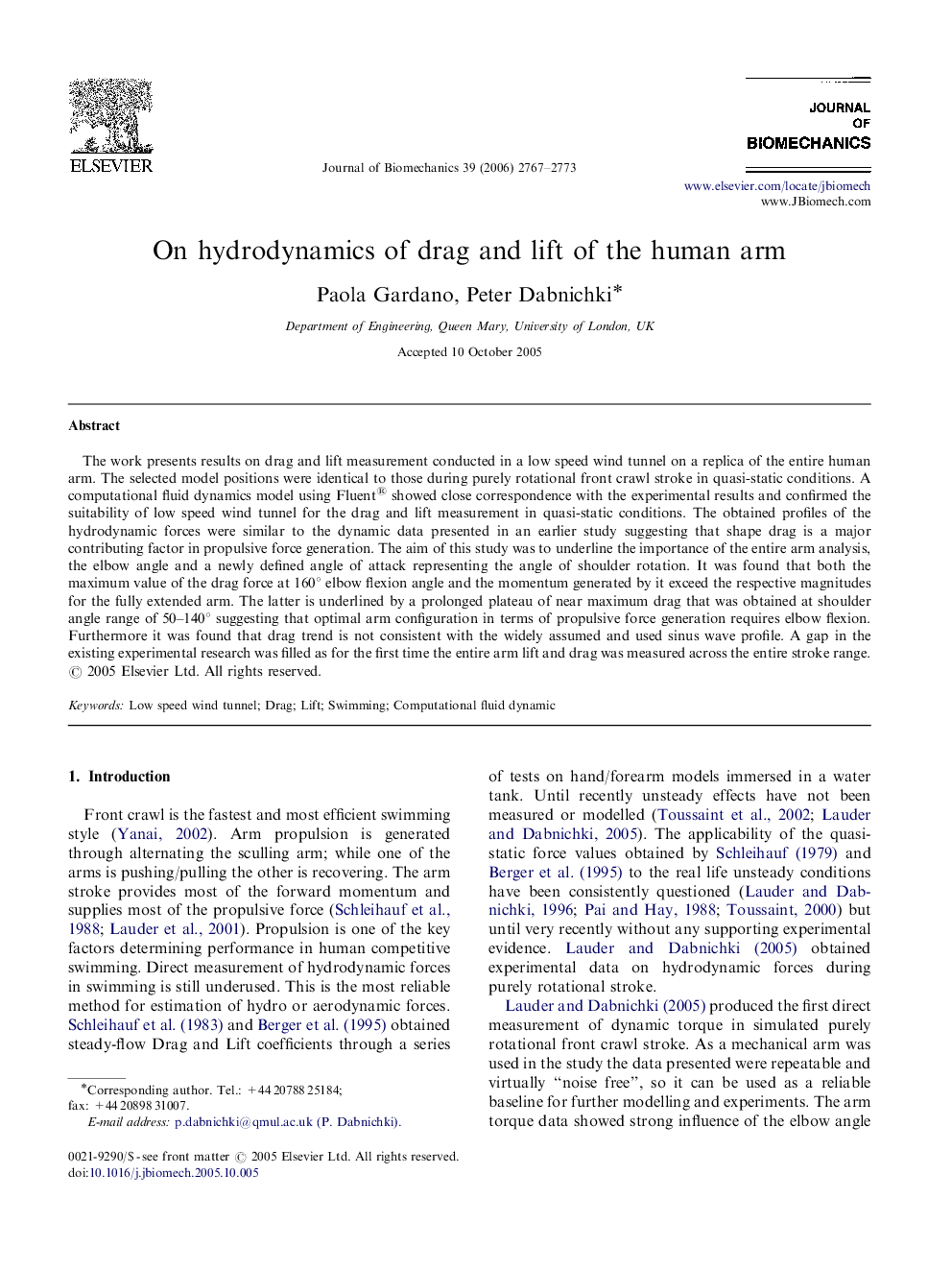| Article ID | Journal | Published Year | Pages | File Type |
|---|---|---|---|---|
| 874599 | Journal of Biomechanics | 2006 | 7 Pages |
The work presents results on drag and lift measurement conducted in a low speed wind tunnel on a replica of the entire human arm. The selected model positions were identical to those during purely rotational front crawl stroke in quasi-static conditions. A computational fluid dynamics model using Fluent® showed close correspondence with the experimental results and confirmed the suitability of low speed wind tunnel for the drag and lift measurement in quasi-static conditions. The obtained profiles of the hydrodynamic forces were similar to the dynamic data presented in an earlier study suggesting that shape drag is a major contributing factor in propulsive force generation. The aim of this study was to underline the importance of the entire arm analysis, the elbow angle and a newly defined angle of attack representing the angle of shoulder rotation. It was found that both the maximum value of the drag force at 160° elbow flexion angle and the momentum generated by it exceed the respective magnitudes for the fully extended arm. The latter is underlined by a prolonged plateau of near maximum drag that was obtained at shoulder angle range of 50–140° suggesting that optimal arm configuration in terms of propulsive force generation requires elbow flexion. Furthermore it was found that drag trend is not consistent with the widely assumed and used sinus wave profile. A gap in the existing experimental research was filled as for the first time the entire arm lift and drag was measured across the entire stroke range.
